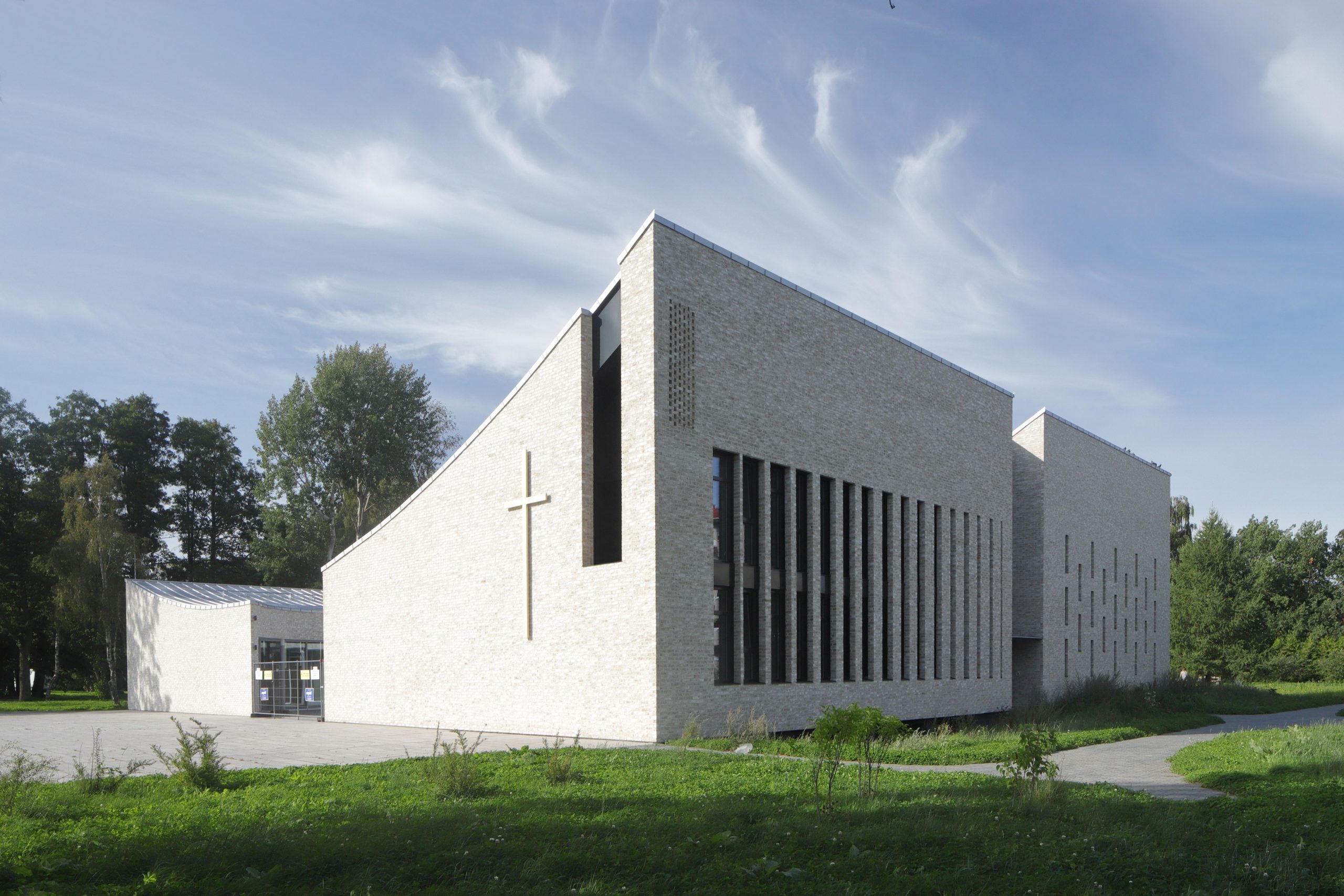
Mustamäe Maarja Magdaleena kiriku krunt paikneb kirjus keskkonnas: ümberringi 5- ja 14-kordsed korterelamud, kaks lasteaeda, koolimaja, kauplusehoone, isegi üks eramu, millele lisandub auto- ja kergliiklusteede rägastik. Sellest tulenevalt on kirikule antud puhas geomeetriline vorm, mis selgelt eristuks ümbritsevast ning ühtlasi annaks kvaliteetsete ehitusmaterjalide ja teostusega märku hoone erilisusest.
Samal ajal, arvestades kehtestatud detailplaneeringut ja väga erinevaid nõutud funktsioone (kirikusaal, ringiruumid, kantselei, toitlustuskeskus, lastehoid, noorte tugikeskus), on loodud plaanilahendust ja hoone sisemist logistikat silmas pidades kompaktne ja ratsionaalne lahendus. Hoone põhiplaan on ruudukujuline, gabariitidega 35x35m. Lõunas lõikub hoonemahtu ümar sisehoov, mis moodustab puhvertsooni tänava ja kiriku siseruumi vahel. Sisehoovis on enne kirikusse sisenemist võimalik ennast vaimselt häälestada, olles ümbritsevast olmelisest ja linnaehituslikult kirjust keskkonnast eraldatud. Sisehoov töötab ka hoonest väljudes üleminekualana ühelt keskkonnalt teisele – kiriklikult igapäevasele.
Tellija ruumiprogramm nägi ette väga erinevaid funktsioone, mis vajasid eraldi sissepääsu ning pidid moodustama autonoomselt toimiva ühiku. Kirikuhoone on jaotatud sellest tulenevalt plaanilahenduselt neljaks osaks, mille vaheline liikumine on orgaaniliselt seotud tervikuks fuajeest avanevate laiade koridoridega. Hoone erinevaid plokke on võimalik sulgeda ja kasutada autonoomselt või kombineeritult kas läbi fuajee või läbi iseseisvate sissepääsude.
Hoone välisilme kujundajaks on nõgus katus, mis tõuseb idasuunal kuni maksimaalse 11 meetrini ning läänesuunal ca 6 meetrini. Lisaks märgilise visuaalse kuvandi ja kirikusaali identiteedi loomisele, annab tõusev katus ka võimaluse luua kõrgemasse hooneosasse lisakorrus ning kujundada põnevat ja mitmekülgset siseruumi laste päevahoiule. Ruumide laed on avatud ning kumer lagi on eksponeeritud ka siseruumides, mis võimaldab hoone vormi tajuda ka interjööris.
Kinnistu planeering jätkab hoone tiheda ruumiprogrammi ja erinevate funktsioonide temaatikat. Kiriku kinnistu on allutatud hoone funktsionaalsele toimimisloogikale. Idaküljes asub laste mänguväljak, mis seotud samas tsoonis asuva laste päevahoiuga. Kiriku lõunaküljel asub esindusväljak, andes hoonele võimaluse esile tulla. Väljak mõjub ümbritsevast kirjust keskkonnast eristuva keskkonnana ning häälestab kirikusse minejat vaimselt õigele lainele. Lisaks töötab väljak kiriku sisehoovi eelruumina. Väljakut kasutatakse ürituste läbiviimiseks. Kuna hoonesse on kavandatud kolm erineva eesmärgiga saali siis on erinevate ürituste samaaegne toimumine päris tõenäoline. Seetõttu on põhjakülge kavandatud eraldi hajumisalaga sissepääs, mis annab võimaluse hoone erinevaid tiibasid segamatult kasutada.
The plot of St. Mary Magdalene Church in Mustamäe is located in a varied environment: around 5- and 14-storey apartment buildings, two kindergartens, a schoolhouse, a shop building, even a private house, to which a maze of cars and light traffic roads is added. As a result, the church has been given a pure geometric shape, which would be clearly distinguished from the surrounding area and at the same time would indicate the special nature of the building with high-quality building materials and workmanship.
At the same time, taking into account the established detailed plan and the wide range of required functions (church hall, circular rooms, office, catering center, childcare, youth support center), a compact and rational solution has been created in terms of planning and internal building logistics. The main plan of the building is square, with dimensions 35x35m. To the south, the volume of the building intersects the round courtyard, which forms a buffer zone between the street and the interior of the church. In the courtyard, before entering the church, it is possible to adjust oneself mentally, being separated from the surrounding everyday and urban planning environment. When leaving the building, the courtyard also works as a transition area from one environment to another – church everyday.
The client’s space program provided for a wide range of functions that required a separate entrance and had to form an autonomous unit. As a result of the plan, the church building is divided into four parts, the movement between which is organically connected to the wide corridors opening from the lobby. The various blocks of the building can be closed and used autonomously or in combination, either through the lobby or through independent entrances.
The exterior of the building is designed by a concave roof, which rises to a maximum of 11 meters in the east and approx. 6 meters in the west. In addition to creating a distinctive visual image and the identity of the church hall, the rising roof also provides an opportunity to create an additional floor in a higher part of the building and to design an exciting and versatile interior for children’s day care. The ceilings of the rooms are open and the convex ceiling is also exhibited indoors, which allows the shape of the building to be perceived in the interior as well.
The layout of the property continues the theme of the building’s dense space program and various functions. The church property is subordinated to the functional logic of the building. On the east side there is a children’s playground, which is connected to children’s day care in the same zone. There is a representative square on the south side of the church, giving the building a chance to stand out. The square acts as an environment different from the surrounding scripture and tunes the person going to church to the spiritually correct wave. In addition, the square serves as an anteroom to the church courtyard. The square is used for events. As three halls with different purposes are planned in the building, it is quite likely that different events will take place at the same time. Therefore, an entrance with a separate scattering area has been designed on the north side, which allows the different wings of the building to be used without interruption.
Martin Kinks, Risto Parve, Kai Süda, Margit Valma, Heldi Jürisoo, Mait Väljas
Sisearhitektuur / Interior – VLS OÜ
Maastikuarhitektuur / Landscape – Järve & Tuulik OÜ
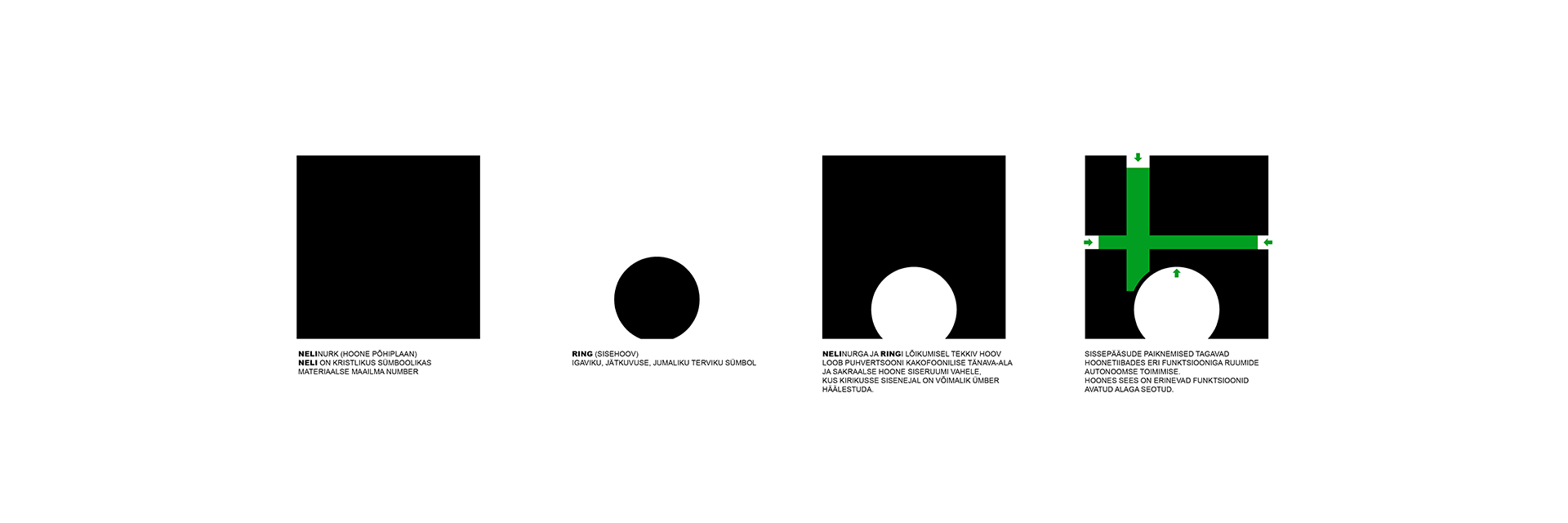


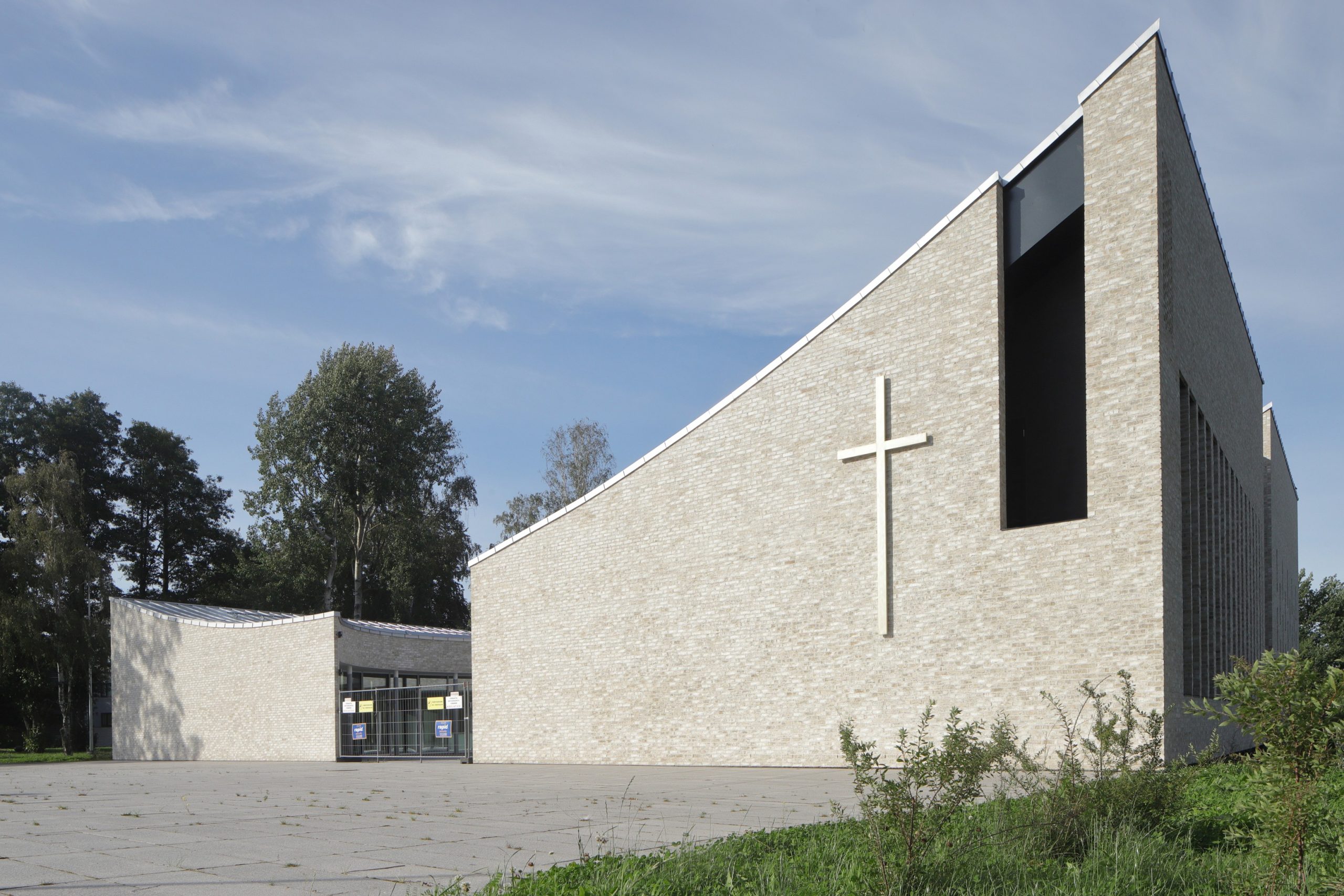
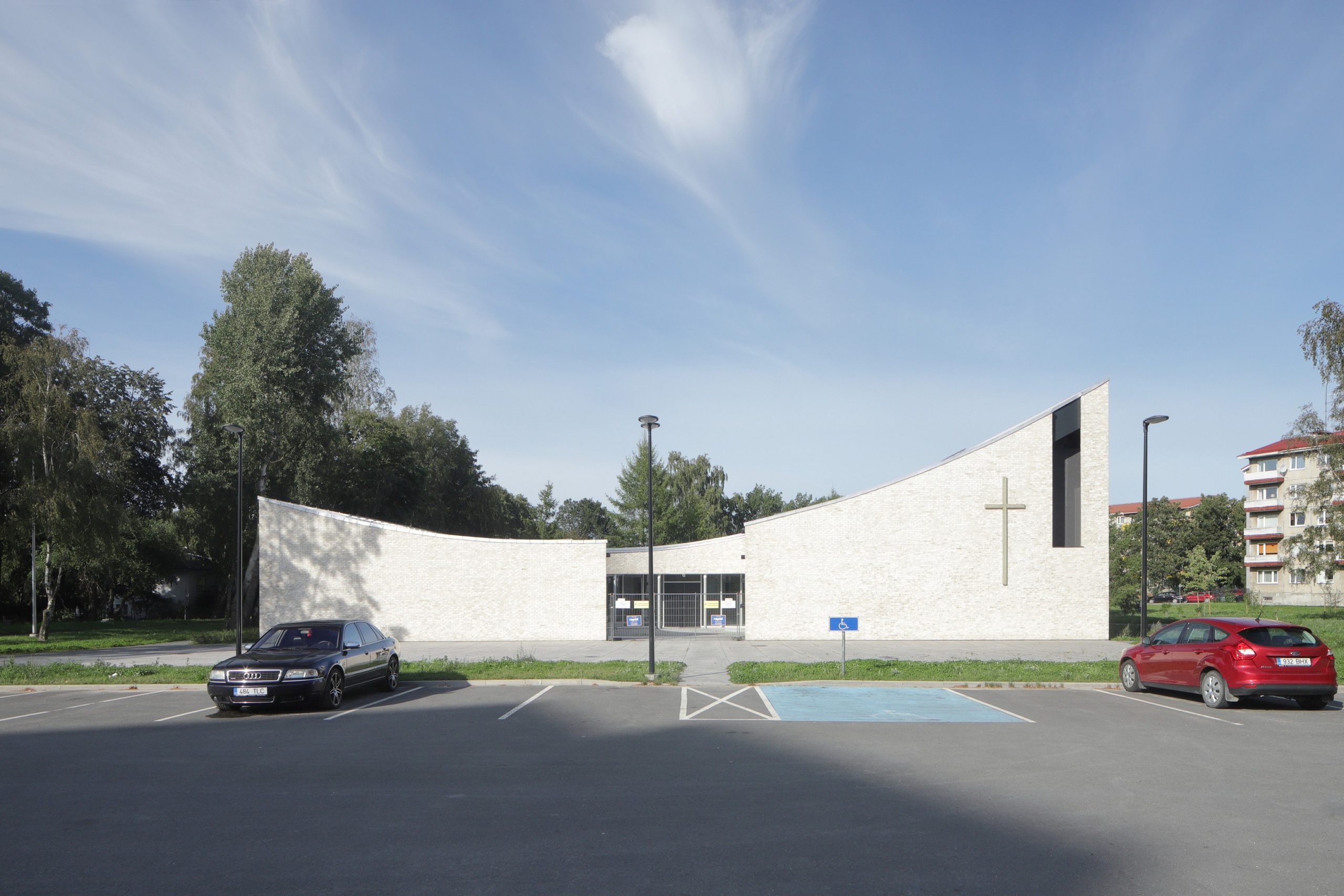
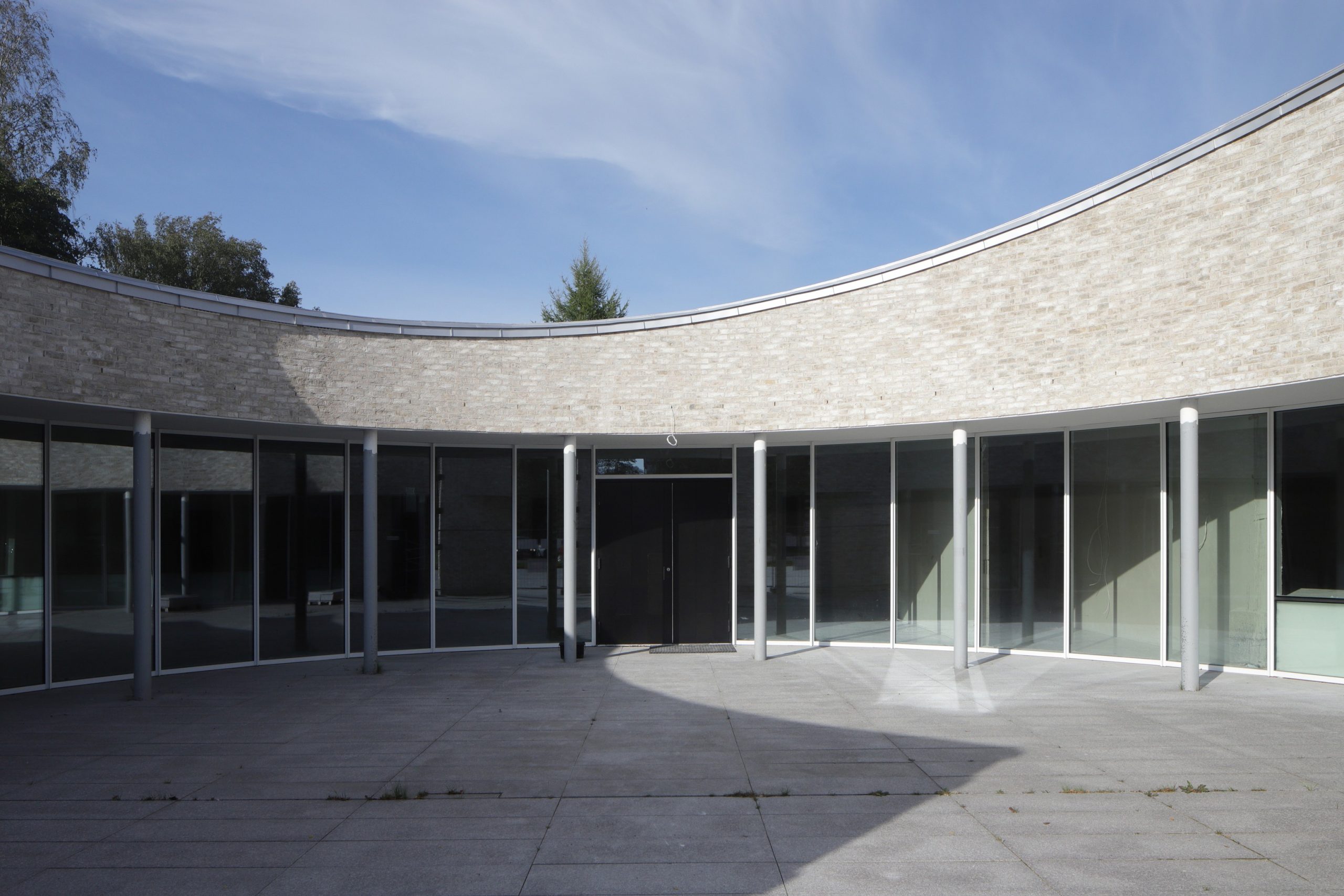
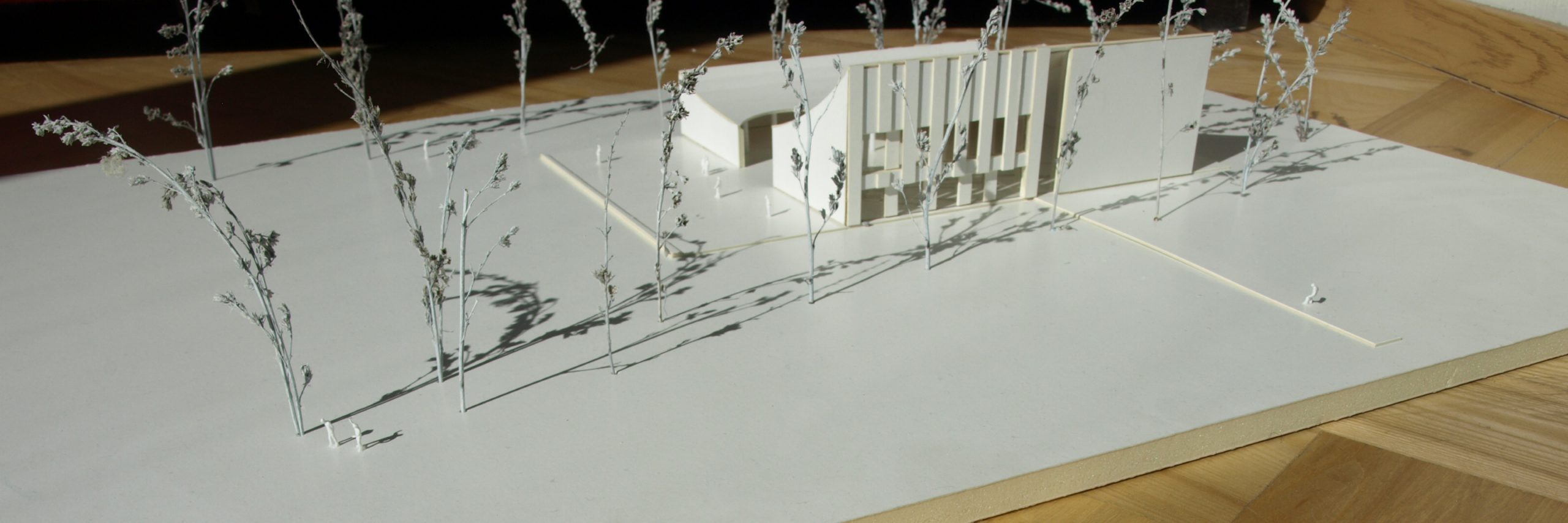
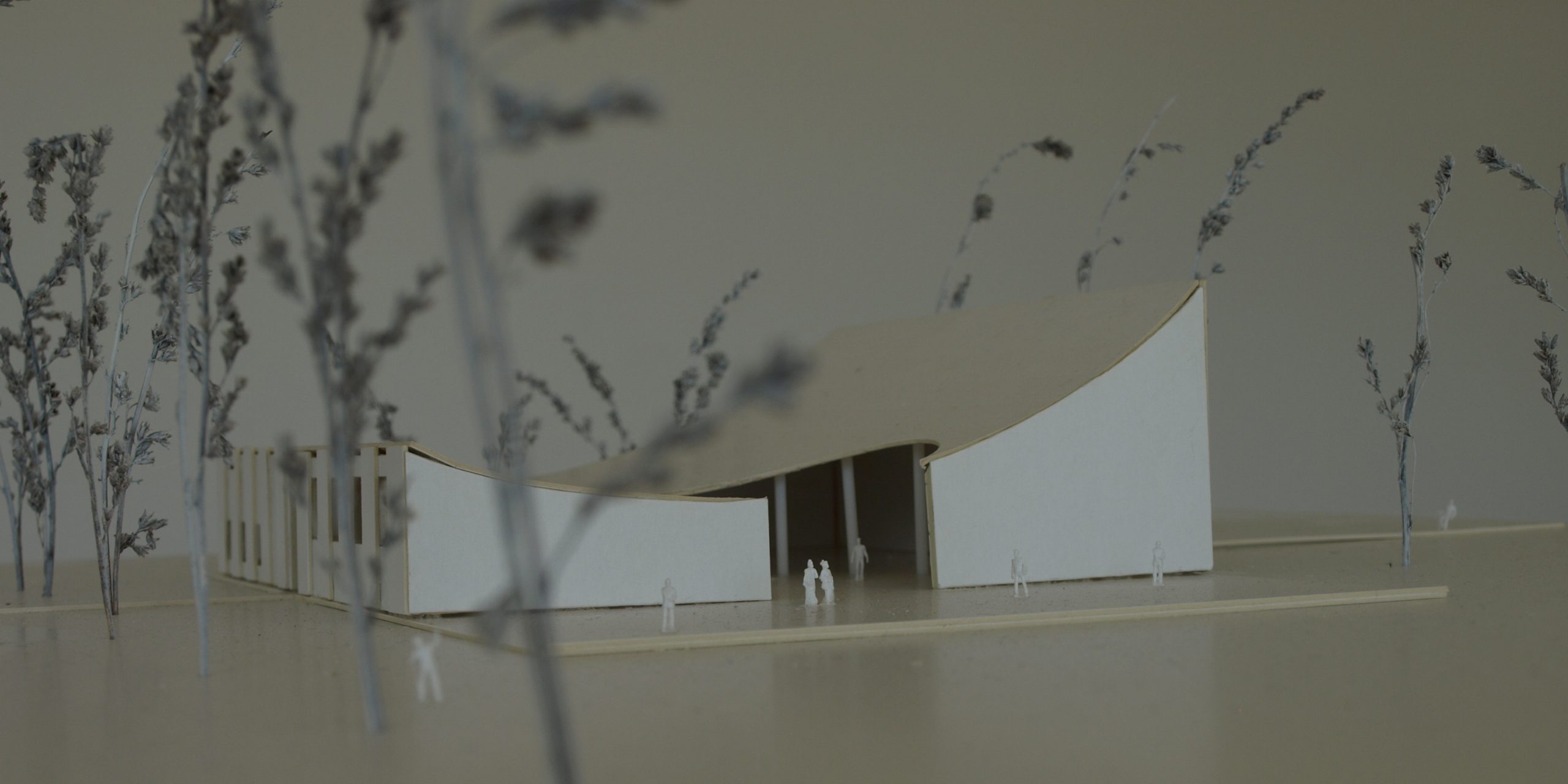
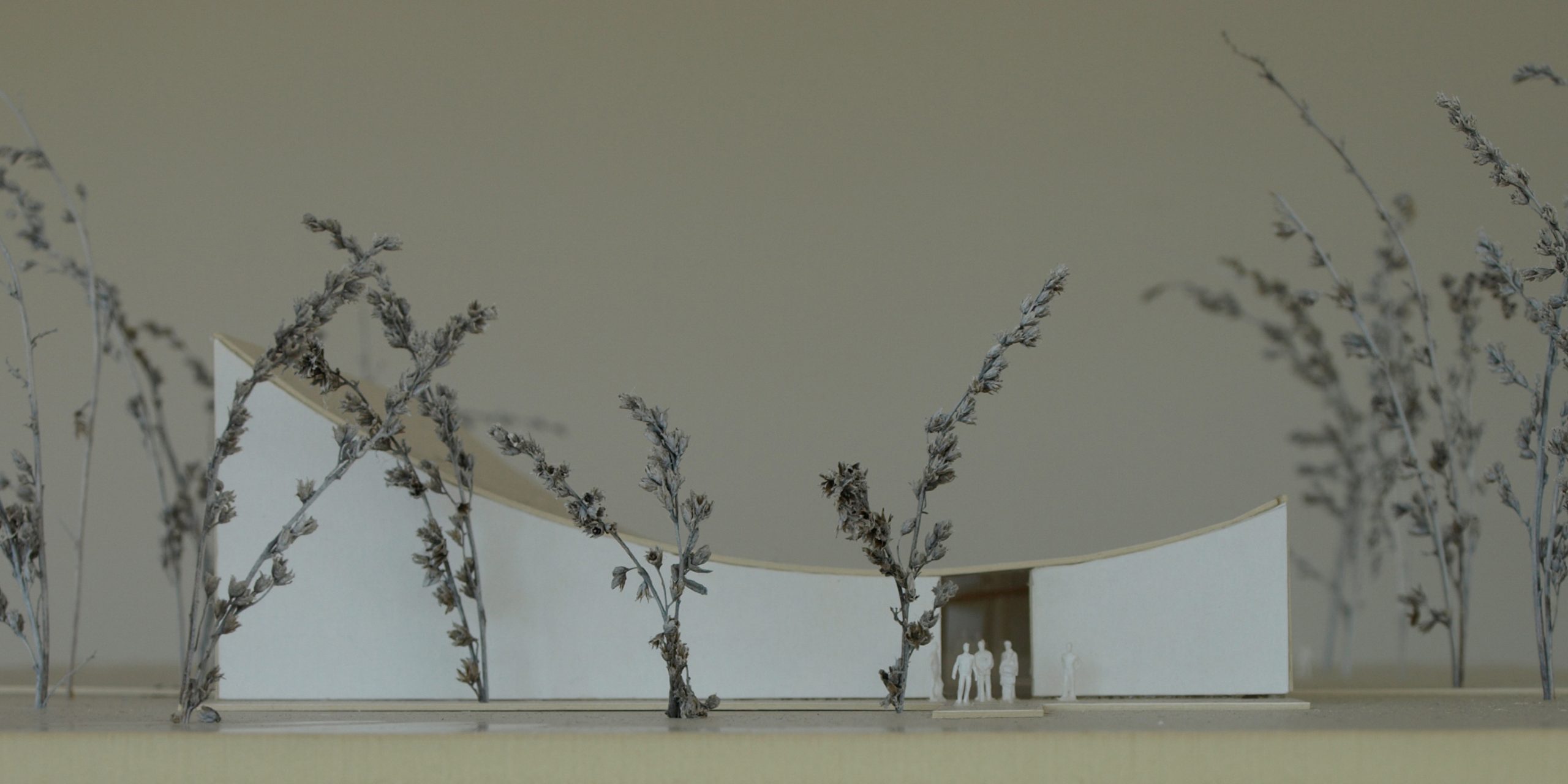

 1. Korrus / Ground Floor
1. Korrus / Ground Floor
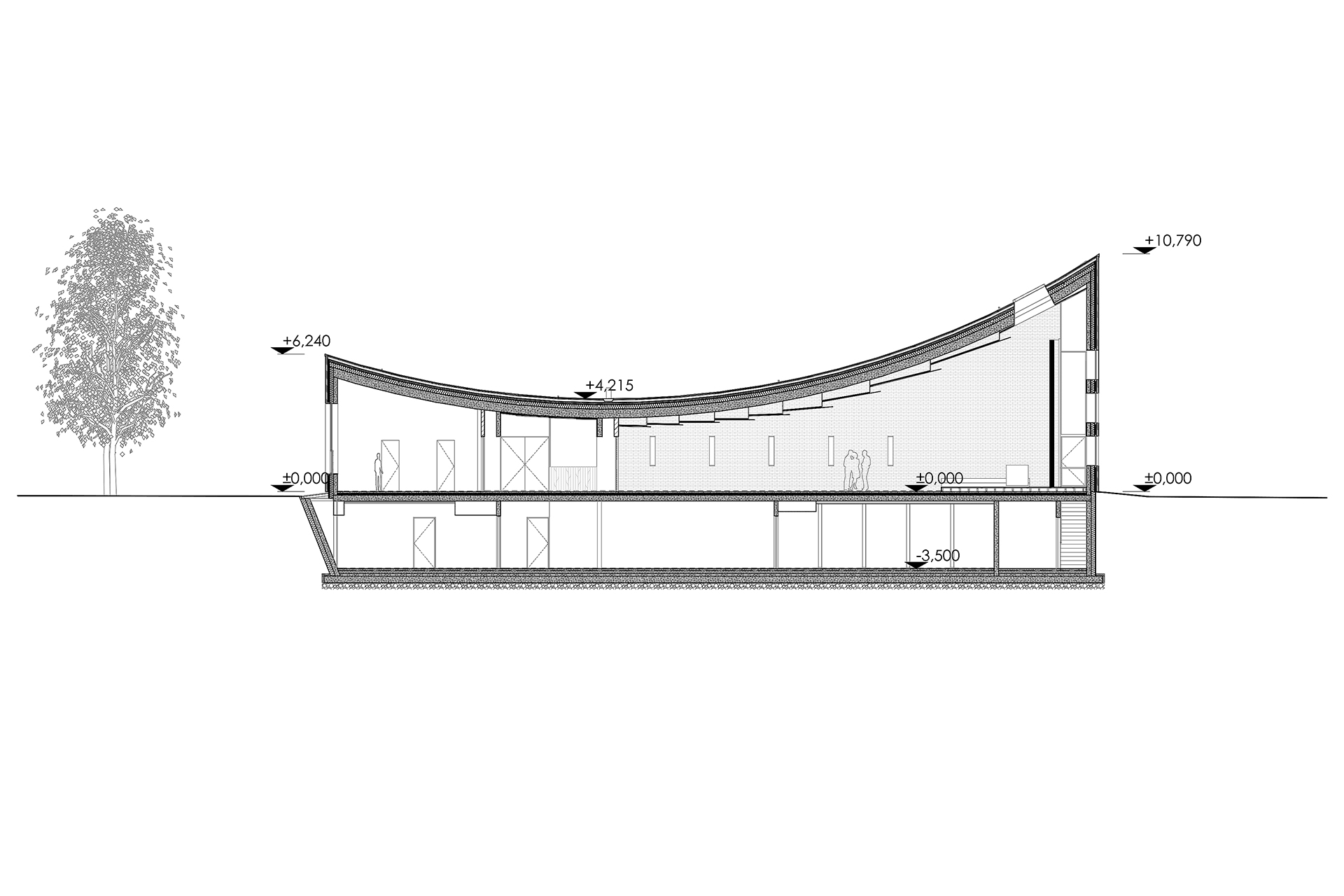 Lõige / Section
Lõige / Section

